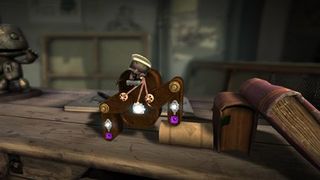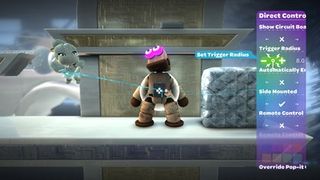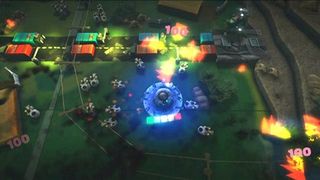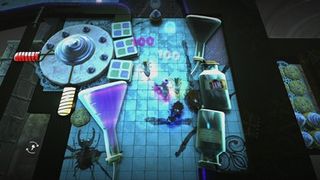E3 2010: LittleBigPlanet 2 makes sense to us now
Hands-on time and careful explanation help us understand exactly what's in store for November
It’s hard not to be a little intimidated by the idea of LittleBigPlanet 2. If you’ve ever created a level in the first game, you know that just making a 2D platformer level can be demanding enough – but using the same interface to create an RTS, a 3D shooter or any other kind of game you want? That seems impossible. Mind-bogglingly impossible.

Now that we’ve seen LBP2 with our own eyes, however, and had a chance to play through a few of its early user-made levels ourselves, it feels like we’ve got a much better handle on what’s in store. As it turns out, LBP2 is one of those things that seems terribly complicated when you hear about it, but actually looks simple and intuitive close-up.
If you’re just playing through one of LBP2’s more traditional side-scroller levels, there won’t be much of an immediate difference from what you might be used to in LBP1. Customizable protagonist Sackboy still has a floaty jump, and you can control his expressions and arm movements the same way. You can even use any of the old DLC and levels you might have downloaded for the first game. However, he has a few new tricks up his sleeve, most notably a grappling hook that can latch onto any surface that Sackboy can cling to (which also includes other Sackpeople, something that can make multiplayer grapple attempts awkward).

However, there’s one huge improvement in LBP2, which could potentially change everything: the Circuit Board. After attaching a circuit (which can be hidden during Play mode) to an object, a board will open up, enabling you to attach a bunch of things to dictate an object’s behavior. Want an object to fly? Attach a Mover object to the board and turn off gravity for it. Want to control the object directly? Attach a Control Seat to it.
The Control Seat, incidentally, has its own circuit board, where in addition to adding behavior-modifying objects, you’ll see a controller mockup. You can then connect the buttons on the controller to different functions; if you have a rotating motor bolt at the center of a wheel, for example, you can wire it to the X button. When riding in the driver’s seat, pressing X then activates the motor. You can do the same for jet engines, guns or any other mechanical function, enabling total control over whatever vehicles you want to create.

We tried out two of these: a strange, flying bird-thing (with convincingly realistic feathers) that could poop blue pellets whenever we hit X, and an electric shaver that someone had attached wings to, and which then flew horizontally and shot at menacing floaty objects before shifting into a top-down Space Invaders-style sequence. Both were enjoyable, and were certainly a big improvement over the piston-driven workarounds that clever player/creators came up with in the first game.
Then there are the Sackbots, LBP2’s new enemies/player proxies/whatever else you want them to be. They can be shaped and decorated to your liking, and programmed with different behaviors, either as enemies or as friends/sidekicks. Slapping a control seat on them, however, turns them into fully controllable mechs. During a closed-door presentation of the game, reps from developer Media Molecule reinforced an idea shared when LBP2 was first revealed: if you don’t like the jumping, you can create a Sackbot and adjust its jumping abilities until they’re exactly what you want. And while that sounds like an odd copout, it actually makes a kind of sense.
Sign up to the 12DOVE Newsletter
Weekly digests, tales from the communities you love, and more

It’s possible, for example, to make a Sackbot that’s programmed to look identical to your Sackboy, and to immediately spawn in its control seat when you start the level. Your control over him/her/it would be exactly to your specifications, and as a player you’d never really see the difference. It’s even possible to control multiple Sackbots at once, which is great if you want to create a level featuring a synchronized dance sequence.
Most Popular


